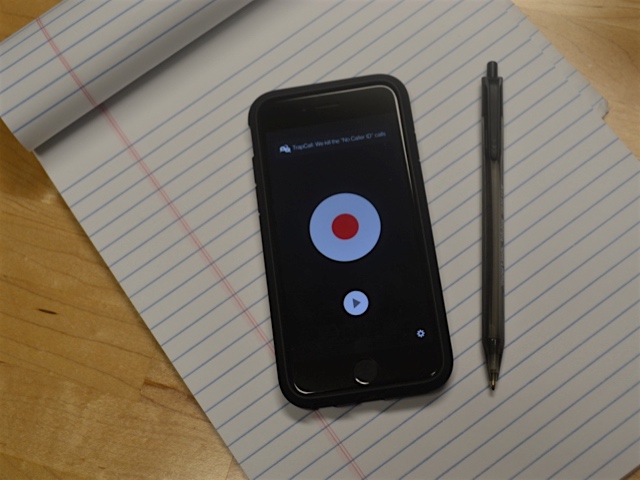
TapeACall’s bullseye interface.
Telephone calls don’t have to travel far to have powerful, lasting implications.
His assistant was only in the next room in March 1876 when Alexander Graham Bell beckoned him, “Mr. Watson, come here, I want to see you.”
I was sitting at our kitchen island at home on snowy Feb. 9 when I called my son, Jack. Home from school, he was upstairs in his hangout, the room above our garage that we call The Doug.
“Can you hear me OK?” I said to Jack.
“I can,” he said.
“So I’m just going to see if this works … so let me hang up and see if I recorded,” I said.
And with that, nearly 141 years after Bell made the first phone call, I successfully recorded my first phone call using an app called TapeACall Pro.
Peace of mind
History probably will pay it little heed, but it was an important personal milestone in my years-long search for a simple, reliable way to record phone calls. I had tried other apps and hardware (I recall a contraption that required wearing something in my ear) with unsatisfactory results.
Recording — and then painstakingly transcribing — are not the most efficient ways to capture a conversation, but situations sometimes warrant that. For instance, the call that I was preparing for on Feb. 10.
It involved a topic with which I was unfamiliar and a source whom I had never met. Add to that the fact that the older I get, the less legible my handwriting has gotten, and I thought it was a good time to revisit my quest to find a recording app for my iPhone. (The voice memo feature is great, but it can’t be used for phone calls.)
I discovered TapeACall in this Digital Trends article. The app cost $9.99 on iTunes for unlimited recordings of incoming or outgoing calls for one year. (Here’s how it works.) Even if I only use it a few times per year, it’s worth it to have the peace of mind that I can go back and listen if I need to augment my notes.
And that’s a key point for a reporter, blogger or anyone else who conducts interviews for content-gathering purposes: Always take notes; never trust a recording exclusively. It’s easy, particularly in person, to forget about writing things down and simply to let a recording device do its thing.
As I have found out the hard way one time or two, it might not. And then you’d better have notes or a really good memory if you want to be as accurate as possible.
Permission required
So while I filled nine-plus pages of a writing tablet, I also had the 58-minute recording (I am impressed with the sound quality of TapeACall) to draw upon for the blog post I would write based on the Feb. 10 conversation.
I would be remiss if I didn’t point out the importance of requesting and gaining permission prior to recording a phone conversation. Pennsylvania has a two-party consent law, meaning, “It is unlawful to record either an in-person conversation or electronic communication without the consent of all parties.”
That’s according to the Reporters Committee for Freedom of the Press, which offers a state-by-state guide to recording laws.
Of course, I asked for Jack’s permission before I pressed the bullseye that set TapeACall Pro into motion.


